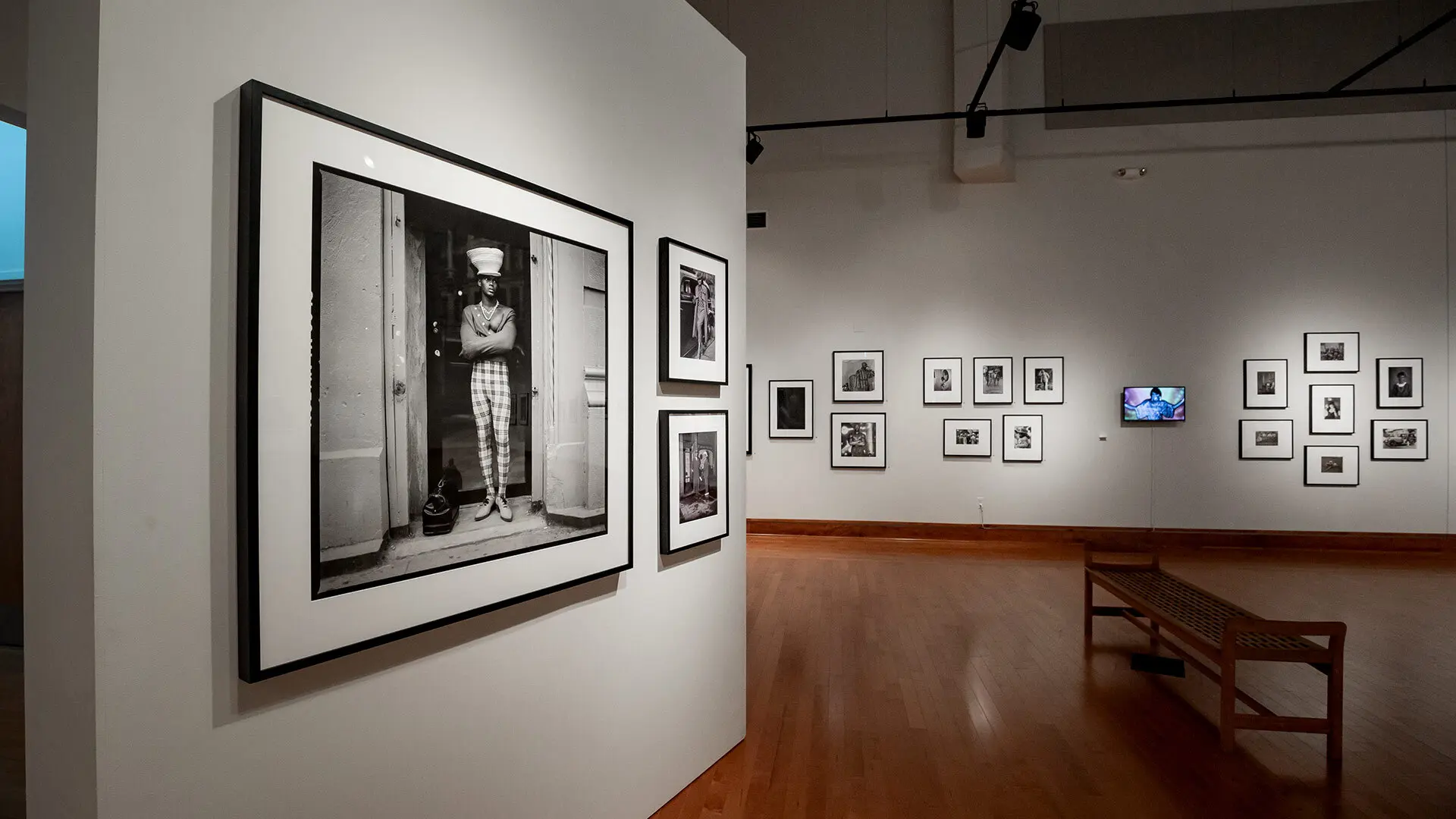Driskell Center Awarded Nearly $690K to Create Institutional Archive, Digitize Newest Collections
July 24, 2024

Grants expected to help solidify center's reputation as leading african american arts institution.
With over 2,000 unique artworks and a library of nearly 5,000 volumes devoted to leading Black artists and scholars, UMD’s David C. Driskell Center has nurtured and celebrated African American art and artists for nearly a quarter-century.
Now, new grants totaling $400,000 from the Terra Foundation will fund a three-year project to establish an institutional archive documenting the center’s activities as an organization and gallery and its history, as well as bring in new archival collections. Called “Writing the Future: Connecting and Supporting Black Archival Collections,” the institutional archive component of the project will compile records of past exhibitions and staff, communication with artists, acquisitions, artist files, publications and more.
“Because the center has played such an outsize role in the field of Black art, the archive will provide not only a close view of the development of the center itself, but also document the critical role that it has played in the wider landscape of African American and African diaspora arts research,” said Jordana Saggese, professor of modern and contemporary American art and director of the Driskell Center. “It will solidify its legacy as the leading institution for the study and the presentation of Black art.”
The Terra Foundation funds will also support work to inventory and make accessible to the public an incoming gift of papers from the collection of Terrie S. Rouse-Rosario, an accomplished arts administrator and executive with a career spanning over four decades. Through elements such as personal and professional correspondence, notes, letters, contracts and photographs, the collection will draw out perspectives on African American art and artists from government, nonprofit and art consultancy organizations, Saggese said.
They will also support the center’s latest acquisition of papers related to the Weusi Art Collective, founded in 1965 by artists Bob Gumbs, Tom Lloyd and Ademola Olugebefola as a response to the lack of representation of Black artists in mainstream galleries and institutions. Operating primarily in Harlem, Weusi—meaning "Blackness" in Swahili—aimed to reclaim African cultural heritage and promote Black identity through art, but remains understudied in the broader context of American art history, Saggese said. The previously unknown papers were donated by Shelley Inniss, the wife of collective member Okoe Pyatt.
Driskell, who joined UMD in 1977, was a mixed media and printmaking artist whose works included his pioneering curated exhibition “Two Centuries of Black American Art: 1750-1950.” After he retired, the university honored him with the naming of The David C. Driskell Center for the Study of Visual Arts and Culture of African Americans and the African Diaspora. The center holds his collection of letters, photos, notes and catalogs, as well as the collections of Black artists and scholars—and friends of Driskell’s—such as Tritobia Hayes Benjamin, Michael D. Harris and Faith Ringgold. He died in 2020.
The Institute of Museum and Library Services also recently awarded the center $289,223 to train and work with eight paid graduate students from UMD’s Library and Information Science master’s program to catalog and digitize three recent acquisitions: the Alonzo Davis Collection, the Michael D. Harris Collection and the Robin Holder Collection. Project staff will also rehouse objects in archival storage containers to improve long-term preservation.
“Donors are clearly drawn to the opportunity to contribute to and be a part of Driskell's legacy,” Saggese said. “These grants are critical to help ensure that the narrative of Black art is documented and celebrated for generations to come.”
A photo exhibition at the David C. Driskell Center explores depictions of African and African American beauty. The center received two grants worth nearly $700,000 to document the center's activities and to catalog and digitize recent acquisitions.
Photo by Stephanie S. Cordle

